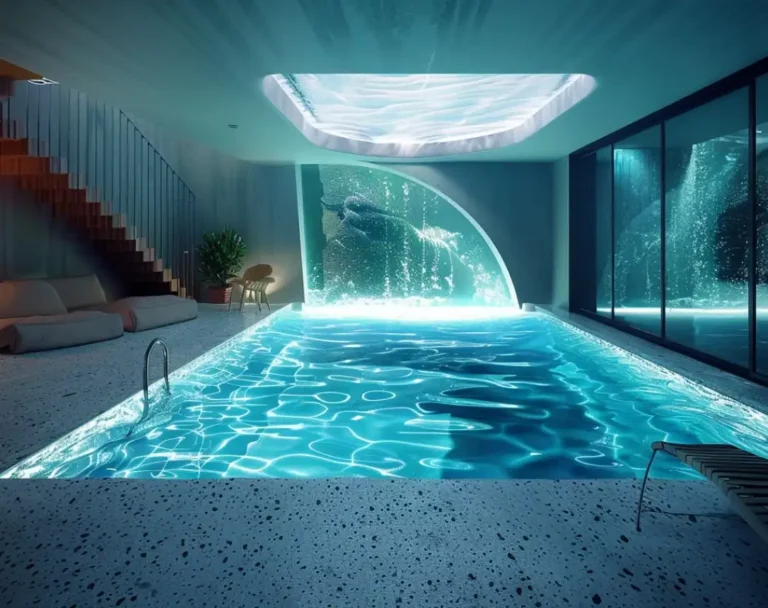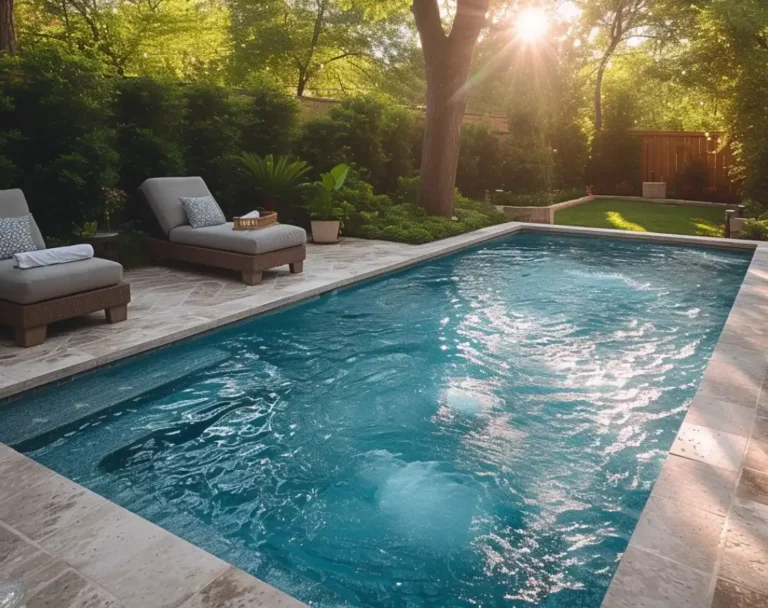Balanced waters are key to a perfect swim. “How to Reduce Alkalinity in a Swimming Pool: 7 Easy Tricks” offers straightforward solutions to maintain your pool’s harmony, ensuring a safe and enjoyable experience.
How to Reduce Alkalinity in a Swimming Pool?
Testing and Analyzing Water Chemistry
Your journey to perfect pool health starts with a testing kit. To keep your pool water in check, grab those trusty test strips and dive into the world of water chemistry. It’s simple: dip a strip into your pool, wait a moment, then match the resulting color against the kit’s chart.
This test reveals the total alkalinity (TA) of your water, numbered in parts per million (ppm). Aim for a TA sweet spot between 80-120 ppm for that just-right balance.
The Role of Total Alkalinity in Pool Health
Imagine total alkalinity as your pool’s guard, keeping the pH level stable and combat-ready against any acids that come knocking. A well-regulated TA is key; it prevents wild pH fluctuations which can lead to corrosion or scaling on your pool surfaces and equipment.
Plus, it makes for a more pleasant swim by ensuring the water doesn’t irritate your skin or eyes. Remember, maintaining proper alkalinity is non-negotiable for the sake of your pool’s longevity and your ultimate enjoyment!
Strategies to Reduce Alkalinity

Chemical Adjustments for Alkalinity Control
To slam down that alkalinity, muriatic acid is your heavyweight champion. It’s a liquid, so handle with care! For a 10,000-gallon pool, you’ll need about 25.6 ounces to drop alkalinity by 10 ppm. Just pour it into the deepest part of your stopped pool and let chemistry do the rest!
Sodium bisulfate, also known as dry acid, is a safer touch. It’s granulated and lowers both pH and alkalinity without the extra scare. Both of these are classified as pH reducers and by extension, alkalinity reducers.
Remember: Always check your pool’s pH level after each treatment, as these chemicals will affect it too!
| Chemical | Form | Usage Note | pH Effect |
|---|---|---|---|
| Muriatic Acid | Liquid | High potency, requires careful handling | Lowers pH significantly |
| Sodium Bisulfate | Granular | Safer and easier to handle | Lowers pH, but less aggressively |
| Soda Ash | Powder | Used to increase pH, not suitable for lowering alkalinity | Raises pH |
| Baking Soda | Powder | Increases alkalinity, avoid for reducing it | Raises pH and alkalinity slightly |
Physical Methods to Lower Alkalinity
Sometimes, you’ve just got to invite air to the party! Aeration accelerates the off-gassing of carbon dioxide, which nudges down pH and alkalinity. Simply, turn on those jets or point your return nozzles up to break the surface tension. It’s a slow dance, but it’s a free one!
Remember, more air equals more action. You’re harnessing the natural process of gas exchange without any chemicals — celebration, right?
| Method | Action | Time Frame | Note |
|---|---|---|---|
| Aeration | Increases gas exchange at water surface | Takes longer | Non-chemical, patience required |
Maintaining Balanced Water Chemistry

Routine Pool Maintenance Best Practices
Check and adjust your chlorine levels regularly. Chlorine is your pool’s primary sanitizer that keeps the water clear of bacteria and algae. Use a weekly testing kit to ensure your chlorine levels stay between 1-3 parts per million (ppm), which is the ideal range for a properly sanitized pool.
- Keep track of pH balance, aiming to maintain it between 7.2 and 7.8. Higher pH can lead to less effective chlorine and potential discomfort for swimmers.
Circulate your pool water. Proper circulation prevents algae and bacteria from settling, ensuring your sanitizers work effectively. Run your pump at least 8 hours a day to achieve this.
- Balance alkaline substances in your pool to prevent scaling and protect surfaces. Your pool’s alkalinity should range from 80-120 ppm to act as a pH buffer.
Routine cleaning is a must. Brush and vacuum your pool surfaces weekly to keep them free from debris and algae.
Troubleshooting Common Pool Water Issues
Encountering cloudy water? This often points to a high pH or low chlorine levels. Test your water, and if needed, adjust the chlorine level first, as it might resolve the cloudiness without further steps.
If you find scaling on your pool surfaces, it’s a sign that your water chemistry is out of balance, typically from high alkalinity. Reduce alkalinity by slowly adding an acid, such as muriatic acid, following the manufacturer’s guidelines.
Struggling with low alkalinity? This can corrode pool surfaces and cause your pH levels to fluctuate. Increase alkalinity by adding an alkaline substance such as sodium bicarbonate in small doses, testing the water after each addition.
FAQ:
What is the fastest way to lower alkalinity in a pool?
The fastest way to lower alkalinity in a pool is by adding muriatic acid or sodium bisulfate, following the manufacturer’s instructions for proper dosing.
What happens if pool alkalinity is too high?
If pool alkalinity is too high, it can cause cloudy water, scaling, and imbalanced pH levels, making it harder to manage water chemistry.
Does baking soda lower alkalinity?
No, baking soda does not lower alkalinity; it actually raises it. To lower alkalinity, you would use an acid.
How do you lower alkalinity in water naturally?
To lower alkalinity in water naturally, you can use aeration which increases the pH without affecting alkalinity, allowing for easier adjustment with acid.





